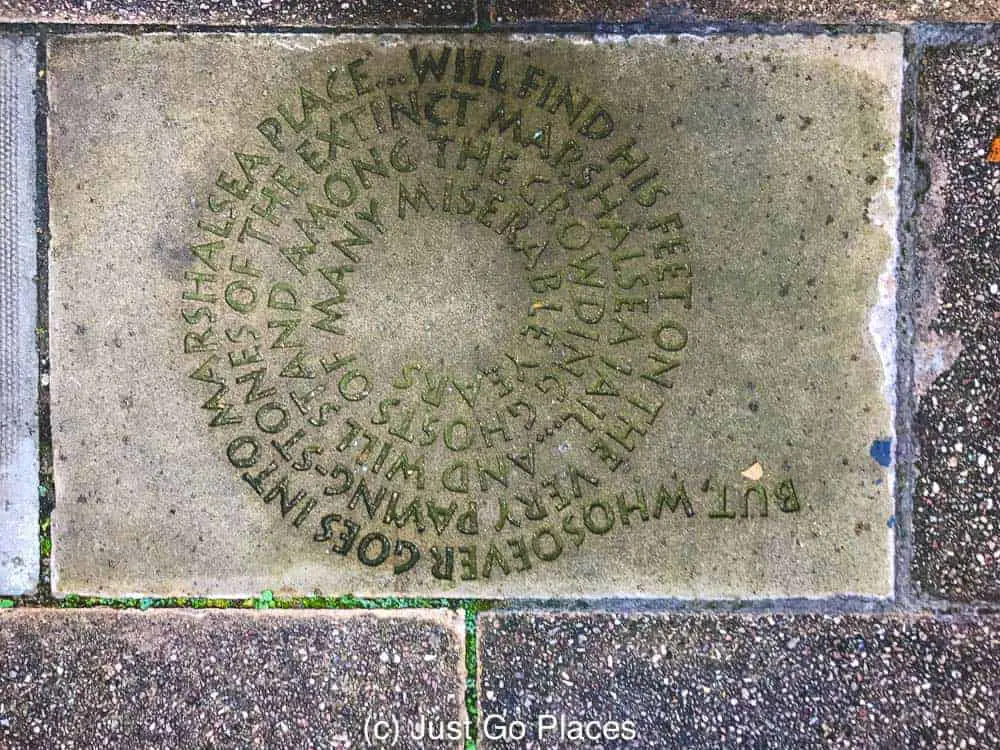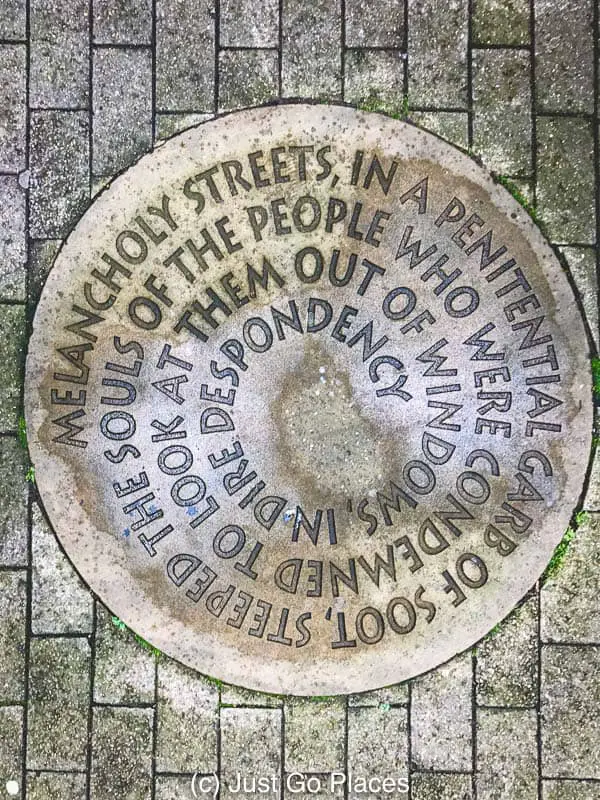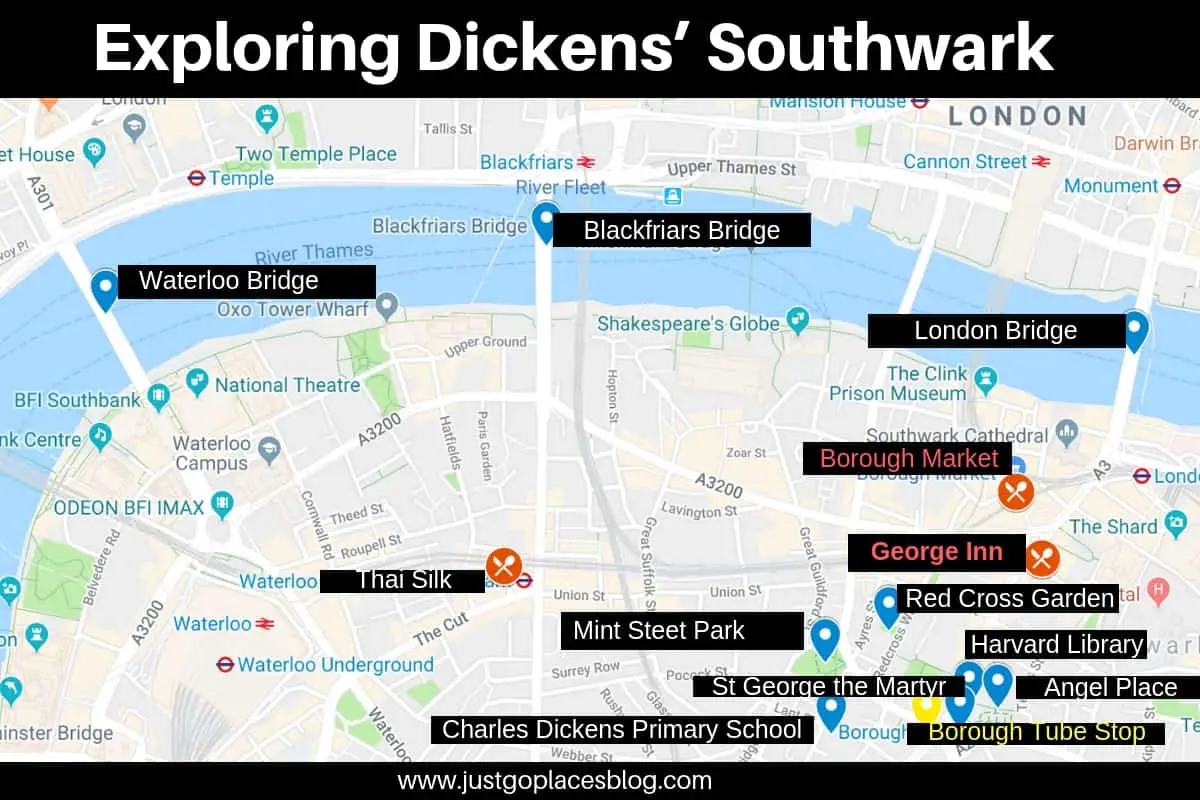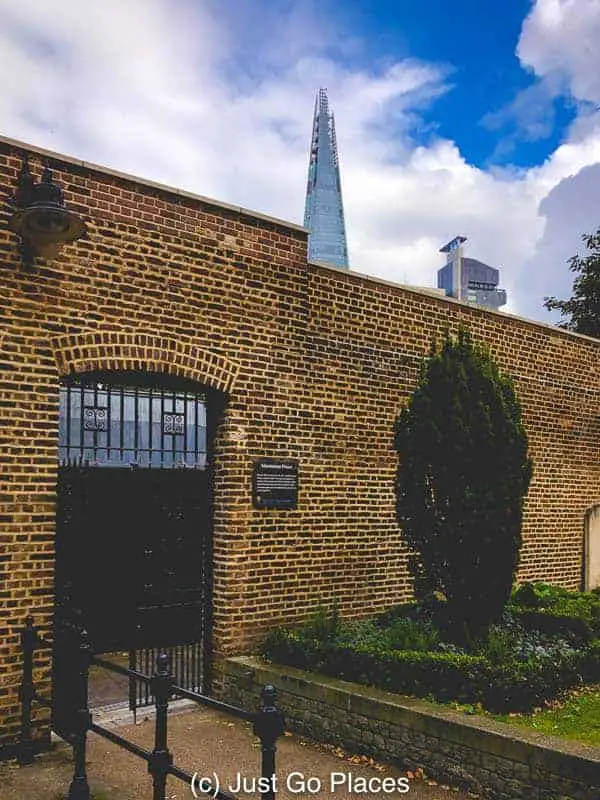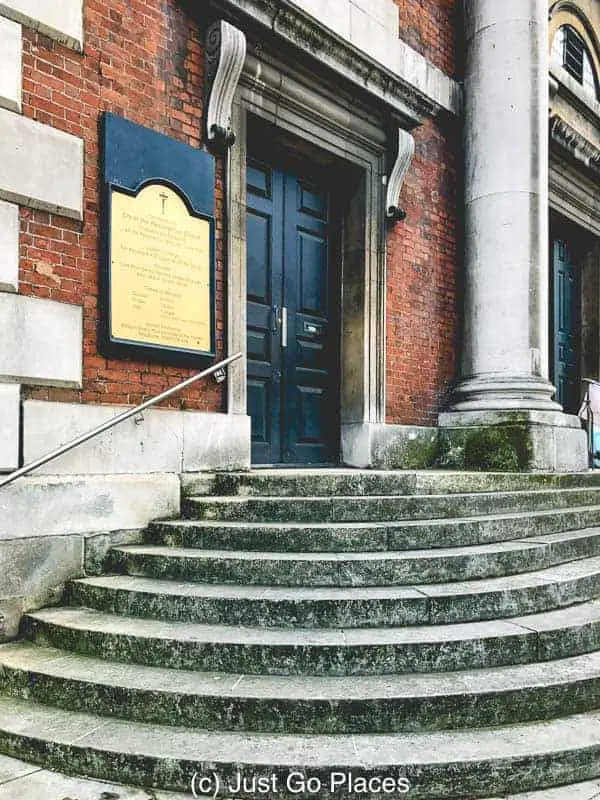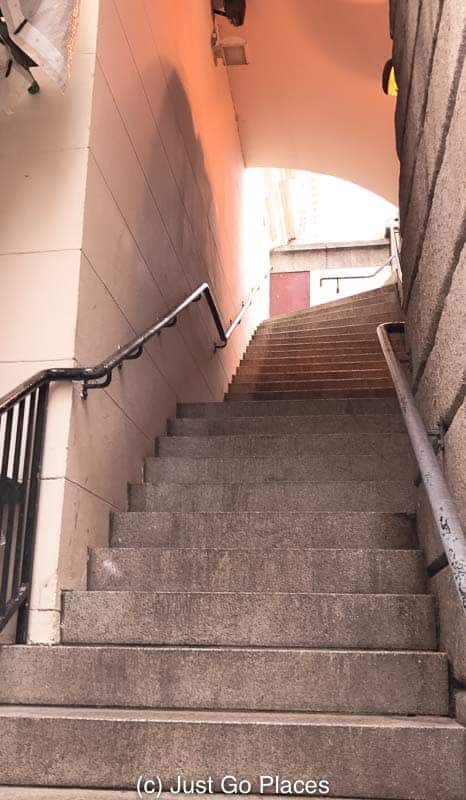When you think of the area of Borough in London nowadays, usually Borough Market springs to mind. Borough Market is an upscale food and drink market near London Bridge that has been in existence one way or another for the last 1000 years. In previous centuries, this area was definitely less pleasant and more dangerous… and home to Marshalsea Prison where a young Charles Dickens experienced poverty in Victorian England firsthand. While Charles Dickens family was imprisoned for debt, he was forced to work in a factory along with other poor Victorian children and live in a neighbourhood that would exemplify Dickensian poverty.
Contents
Poverty in Victorian England
Wealthy British philanthropist Charles Booth refused to believe that poverty in Victorian England was so bad that nearly a 1/4 of the population lived in poverty. He commissioned his own team of researchers in 1886 and their report was published in 1903, a 17 volume page-turner The Life and Labor of the People in London.
What did the report say about Victorian poverty in London? It was even worse than thought.
Nearly 30% of the population (1.8 million) was living in poverty.
Another 1 million were teetering on the edge of poverty – it would take as little as a debt being called in such as what happened to Charles Dickens family – to topple them into full-blown poverty.
Over half of the poor lived south of the river between Blackfriars Bridge and London Bridge (see map below) in the area of Borough in Dickensian poverty.
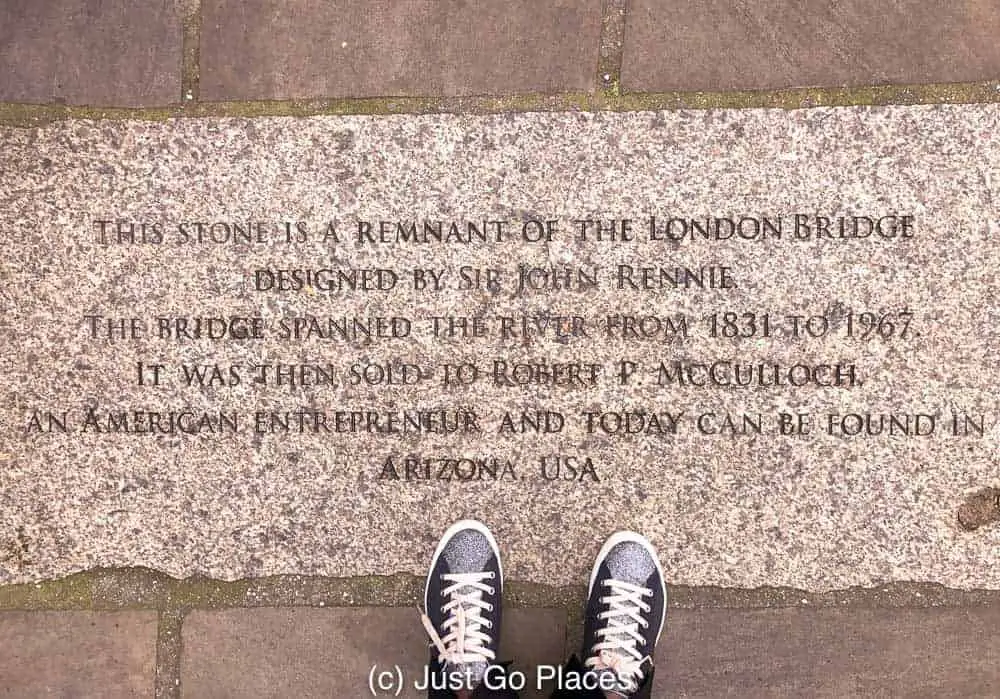
A plaque indicating where the Victorian London Bridge which is currently located in Arizona would have stood.
Debtor’s Prisons in Victorian England
In the 18th century, over half the people who were in jail were there because they couldn’t pay off their debts. And, every year, another 10,000 people would be thrown in debtor’s prisons in the Victorian Era.
If you were a merchant or trader then you could declare bankruptcy. If you were just running up personal debt, there was no way out of the situation short of (i) paying up, (ii) going to prison or (iii) fleeing to Europe.
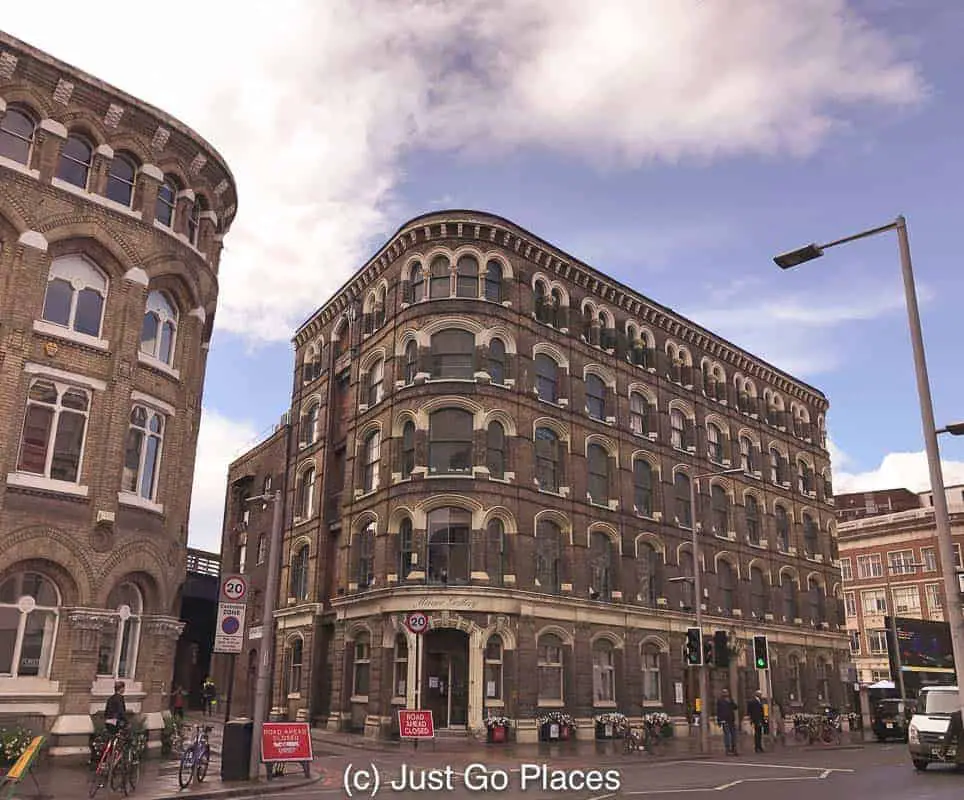
Factories and workhouses provided work for the poor such as this Menier chocolate factory which is now a trendy residence.
Since the Middle Ages in England, you could be thrown in prison for owing money. For example, there are records in the nearby criminal prison, The Clink, for a man being jailed for owing £15 to a blacksmith in the 16th century. So any small amount could land you in jail – it wasn’t until 1827 that the law required your small debt had to be at least £20.
By the way, the Clink is the same prison that held anyone Cromwell didn’t like during the English Civil War and Puritans who went onto become the Pilgrim Fathers at Plymouth. So, a real mix of the poor, the bad and the devout (but not aristocratic enough to warrant the Tower of London).
Debtor’s Prisons in London
By the time of Dickens, you began to separate the criminal from the merely poor. You had 4 debtor’s prisons in London – Whitegate Street, Fleet Street, King’s Bench and Marshalsea. There was a pecking order among the prisons and Marshalsea Prison considered middling. Despite what Charles Dickens may have thought, it could have been worse!!
Debtor’s prisons were for-profit enterprises that were used to house people who couldn’t pay their debts. While in prison, they were charged for their time in jail! If they could pay prison fees, they could be sent to work and a part of their wages used to pay off their debt.
If imprisoned debtors couldn’t pay their prison fees, the fees just accumulated and got added to the original debt. It was a vicious cycle for the poorest of the poor. People actually starved to death in debtor’s prisons because they couldn’t pay for food.
Needless to say, living and working conditions in these prisons were harsh and corruption was rife. For example, jailers could chain up their prisoners and then remove their chains for payment.
One of the wardens of Marshalsea Prison was actually put on trial for the murder of prisoners. You know the brutality was bad, i the abuse actually rose to the level fo making it to the courts.
And, life went on as normal in many ways. Entire families were imprisoned together. People could carry on their trades in prison such as laundry services or sewing. People could also beg or get alms from visitors.
Some European countries had laws that debtors could only be jailed for up to a year but in Britain, debtors were jailed until their creditors were happy. When they closed Fleet Prison in 1842, they found two prisoners who had been there for 30 years.
Dickens mentions debtor’s prisons in several books – Mr Pickwick got sent off to Fleet Prison, David Copperfield is at the King’s Bench and Marshalsea Prison appears throughout Little Dorrit.
The Class Divide of Victorian Poverty
Debtors prisons in Victorian England were set up to maintain hierarchy similar to the society at large. For example, at Whitecross Prison, there was a separate barebones facility for common prisoners and better accommodation for citizens of the city of London.
The Kings Bench prison even let you live outside the prison walls with a prescribed area if you were of a higher class.
So not only were there class divisions in debtors prisons, Victorian England also had different standards if you were upper class and profligate. Your family would just send you abroad to avoid the social embarrassment. A popular alternative was Boulogne in Northern France where nearly a quarter of the town were debt-ridden English people.
Marshalsea Prison
Opened in 1373, Marshalsea was a notorious prison south of the Thames River in Southwark. Only the ruins remain because Marshalsea was closed in 1842 and its prisoners divided between Bethlem Hospital (the infamous Bedlam) if they were mentally ill and other prisons.
The church of St. George the Martyr next door was used as the burial ground for debtors who died while at Marshalsea.
Charles Dickens Family Experience of Marshalsea
“Marshalsea is gone and the world is none the worse without it.”
– Charles Dickens
Charles Dickens’ father was imprisoned at Marshalsea Debtor’s Prison in 1824 when Charles was 12 years old. Charles’ father, John Dickens, owed a baker a little over £40.
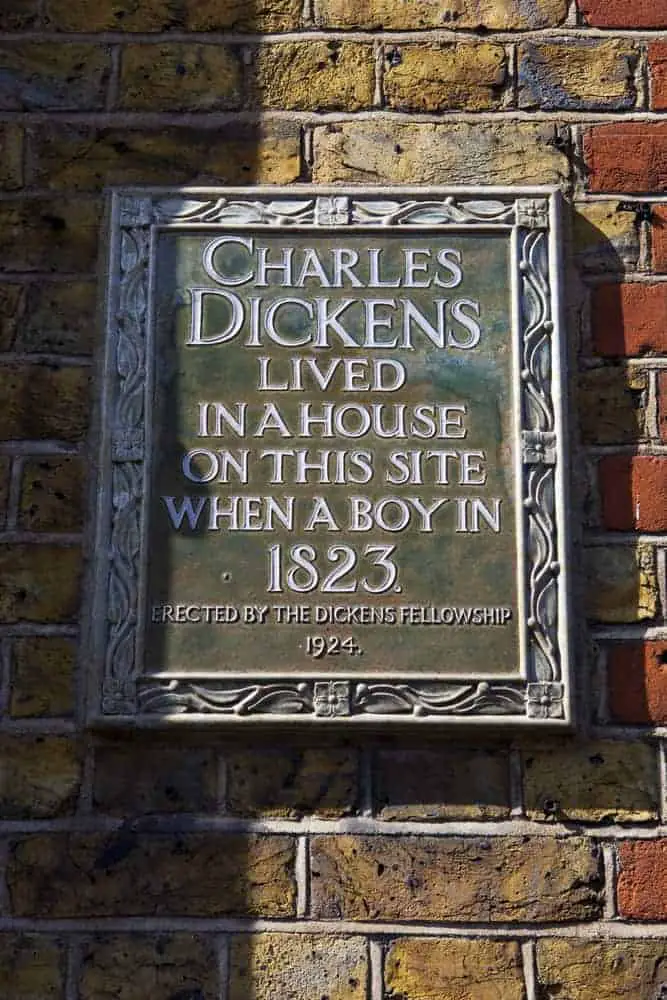
Plaque on Bayham Street in Camden, London locating the site on which Charles Dickens once lived prior to being shown the underbelly of Victorian life south of the River in Southwark.
This traumatic event made a huge impression on the young boy who was sent to lodgings nearby and forced to work at a factory full-time to pay for his upkeep. His mother and sisters joined his father at Marshalsea Prison. Luckily for Dickens, his father was released after 3 months when he came into an inheritance.
Charles Dickens himself was put in a boarding house on Lant Street which is now where the Charles Dickens Primary School is located. He worked at Warren’s Blacking Factory near Waterloo Bridge where he worked putting labels on shoe polish bottles.
During his lifetime, Charles Dickens family never mentioned the Marshalsea period. His first hand experience with Victorian poverty was only revealed to the public in a biography after he died.
Dickens’ novel Little Dorritt is about a girl who is born and grows up in Marshalsea Prison. Her father is in jail and the family joins him. In fact, all three of the family’s children are raised in Marshalsea because the father is in Marshalsea for so long. Ironically the father could have gotten himself out of jail, but he’s gotten used to a certain lifestyle and respect at Marshalsea that he doesn’t want to trade for his (or his family’s) freedom.
A Charles Dickens Walking Tour of Southwark
For Charles Dickens poverty was an important theme in his novels and of which he had first hand experience. Charles Dickens’ childhood was marred by the time his father and the rest of his family was thrown in Marshalsea prison. In fact, the written descriptions of poverty in Victorian England were so vivid that the phrase Dickensian poverty immediately brings up images of hardship, crime and degradation a 100+ years later.
Despite having transformed into a trendy area, this DIY walking tour of some of the places in Southwark will give you a flavour for the world described in his books.
We did this Charles Dickens walking tour with children so I have mentioned both outdoor spaces and places where you can stop of for a snack/break. The places are relatively close together and the walking is easy. You can easily do this walk in a couple of hours if you are not dawdling like we were.
The Ruins of Marshalsea & Environs
The surviving remains of Marshalsea Prison exist on Angel Place in Southwark (Borough tube stop on the Northern Line). The other prisons are also long gone and replaced with newer buildings including the nearby Kings Bench Jail on Borough High Street. Luckily, the association with Dickens and Little Dorrit has allowed for the location of the Marshalsea prison to remain as a homage to Dickensian poverty.
The Church of St. George The Martyr is where the character of Little Dorrit was both baptised and married. The church has a stained glass window depiction of Little Dorrit.
The Charles Dickens Primary School is over the site of the boarding house on Lant Street where 12 year old Charles Dickens would have stayed while his family was at Marshalsea Prison. He got taken out of school, separated from his family and sent to do factory work all in a short space of time.
The Crossbones Graveyard is located on Redcross Way (at the corner of Union Street ) and is the burial ground for people deemed undesirable by the Medieval church- the prostitutes and poor who lived in the neighbourhood. For hundreds of years, some 15,000 people were buried in this graveyard until it was closed in 1853. It’s not like these people got dignity in death either – the graveyard was a popular spot for body snatchers who would sell the bodies for medical research at St. Thomas Hospital nearby.
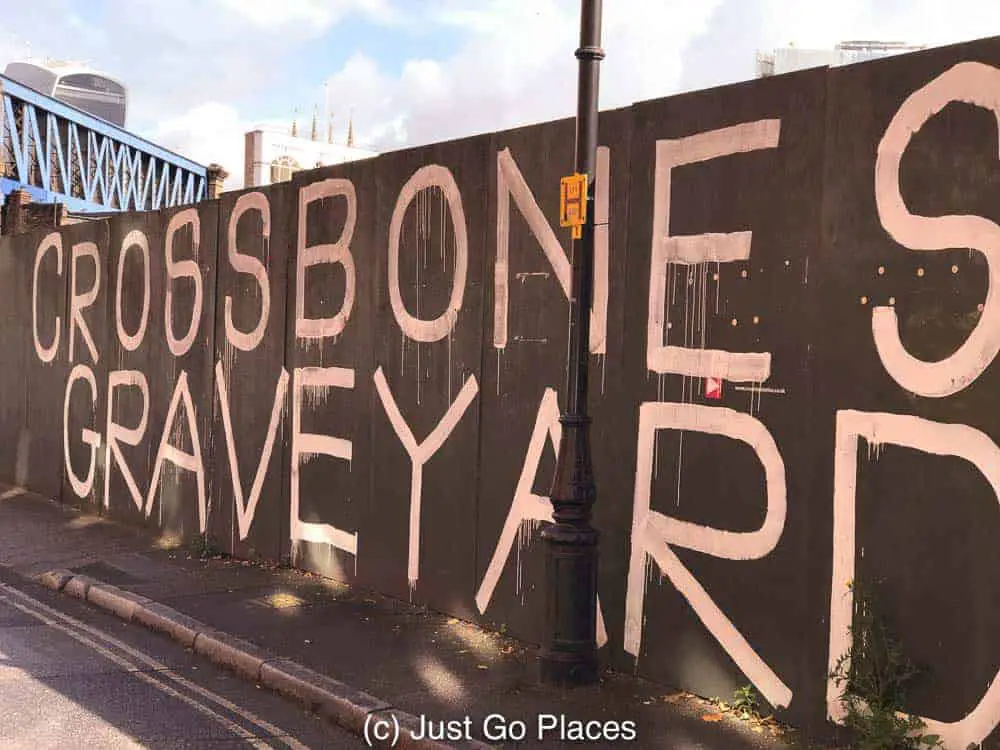
For hundreds of years, Crossbones Graveyard has been the final resting place for London’s prostituted and paupers.
Across from the Crossbones Graveyard is a former Victorian Ragged School (now a city council building). Ragged schools provided free education to poor Victorian children consisting of reading, writing, counting and Bible studies. Dickens was not particularly impressed with the schools because he thought they were too heavy on the relgion. A visit to London’s Field Lane Ragged School inspired Charles Dickens to write A Christmas Carol.
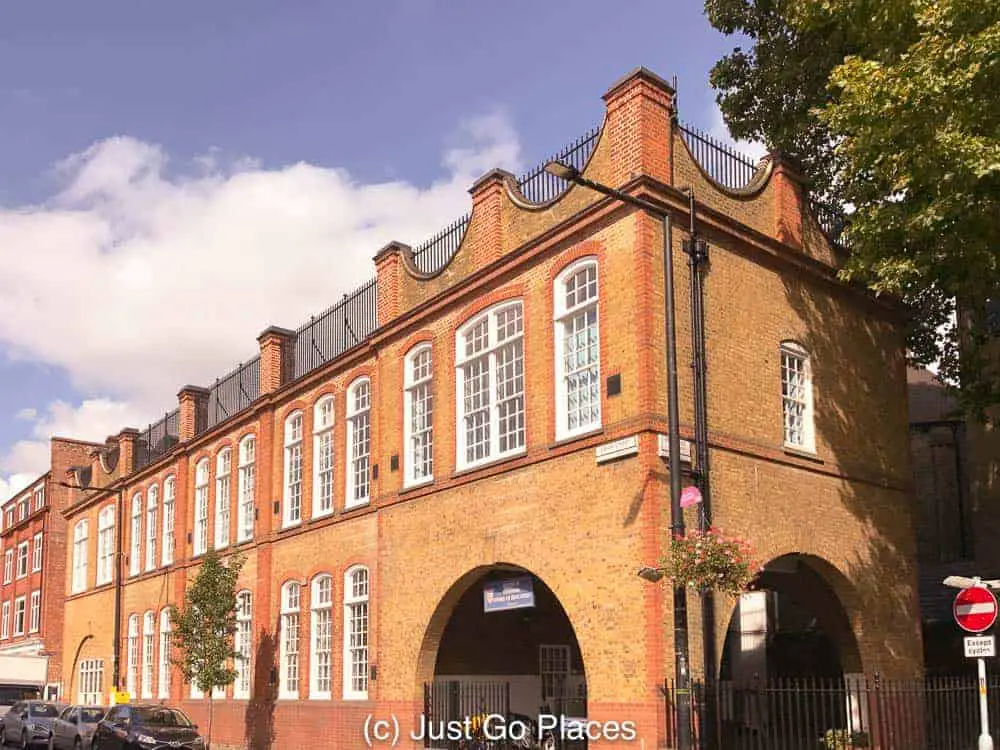
This former Ragged School had its outdoor space on the rooftop. Victorian social reformers believed in fresh air (not necessarily clean air and/or health and safety in parks).
Nancy’s Steps are all that remains of the 1831 London Bridge. This older London Bridge was sold in 1967 to an American and currently spanning Lake Havasu in Arizona. The newer version of London Bridge you see today would not be the one that Dickens wrote about.
The steps are on the corner of London Bridge and Duke Street Hill and leads you into Borough Market. In Oliver Twist, on these steps Fagin’s henchman overhears Nancy plotting against the gang’s interest (a betrayal that does not end well for poor old Nancy). You can surmise that Nancy would have ended up in the Crossbones Graveyard.
Outdoor Spaces
Mint Street Park is the location of the former Mint Street Workhouse which Charles Dickens would have passed every day on his way to work in the shoe polish factory off Waterloo Bridge. It is believed that Charles Dickens modelled the workhouse in Oliver Twist on the Mint Street Workhouse. The Mint Street Workhouse was still in use until 1921 but today all that remains is a bit of a wall.
Across from Angel Place, the Little Dorrit Park is a former Victorian slum that was razed to create a children’s play ground and named after the Charles Dickens’ character.
The Red Cross Garden is an oasis in an otherwise bleak urban landscape. Set up in 1887 on the site of a former paper factory, it is overlooked by houses that were set up by Victorian social reformer, Octavia Hill. She was a big believer in having access to the outdoors for urban dwellers.
Eating and Drinking
The George Inn is located at 77 Borough High Street. A National Trust property in London, the George Inn was built in 1677 and the only remaining inn in London with a galleried porch front. Charles Dickens frequented the George Inn and it is mentioned in Little Dorrit.
Borough Market is a foodies delight. If you want to keep in line with the Dickens theme though for a quick lunch, the Little Dorrit Cafe on Park Street just outside Borough Market is reputed to have the best bacon butty (sandwich) in London.
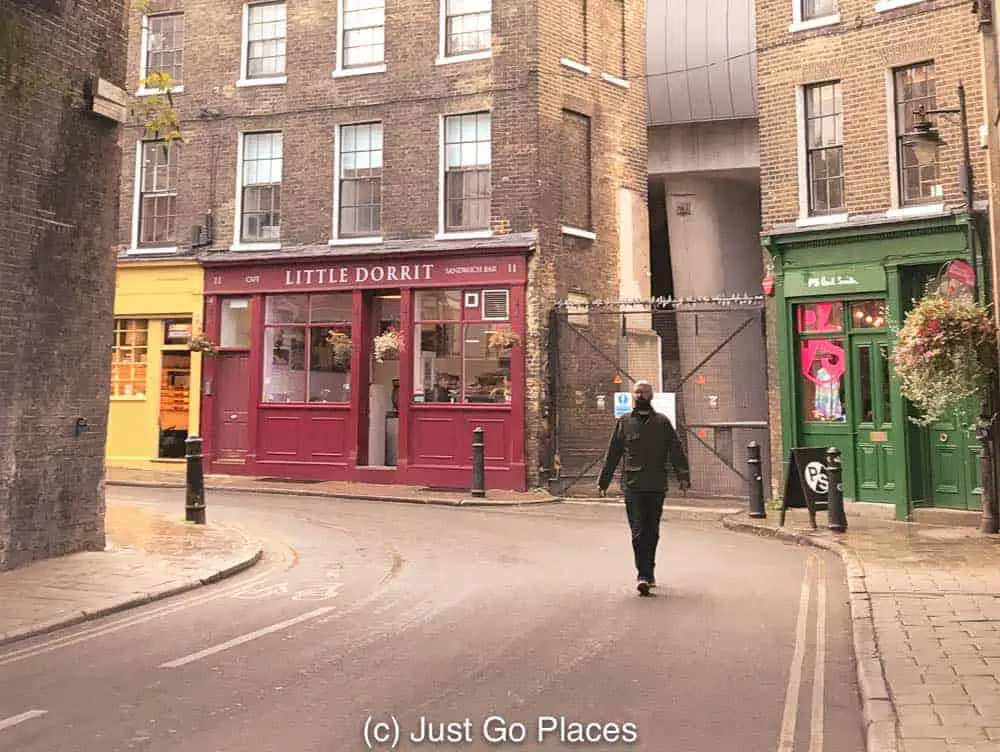
The Little Dorrit Cafe has great bacon sandwiches if you want to stop for a bite on your Charles Dickens walking tour.
If you are heading towards Waterloo Bridge, check out Thai Silk which is one of my favourite authentic Thai places in London. It’s got a lovely outdoor space for nice summer days too.
Guided Charles Dickens Walking Tour
Prefer to have your Charles Dickens walking tour with a guide who knows where to go and explain it all? Check out these options!
- A 3 hour walking tour that goes both North and South of the River
- An almost 2 hour walk of Southwark explaining Dickens’ connections with the area
Reread the books before you do a tour!
SPREAD THE WORD! PIN THIS TO YOUR TRAVEL PINTEREST BOARDS FOR FUTURE REFERENCE!
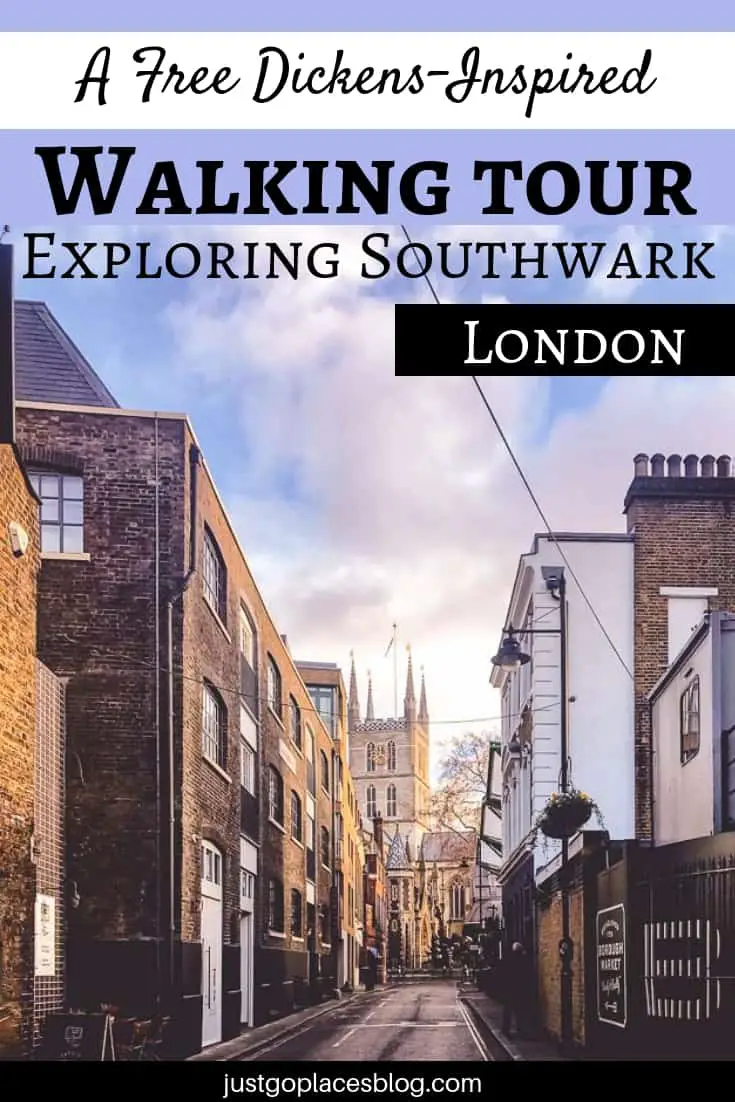
See for yourself on this free and easy Dickens walking tour places from Charles Dickens childhood that inspired his interest in poor Victorian children.
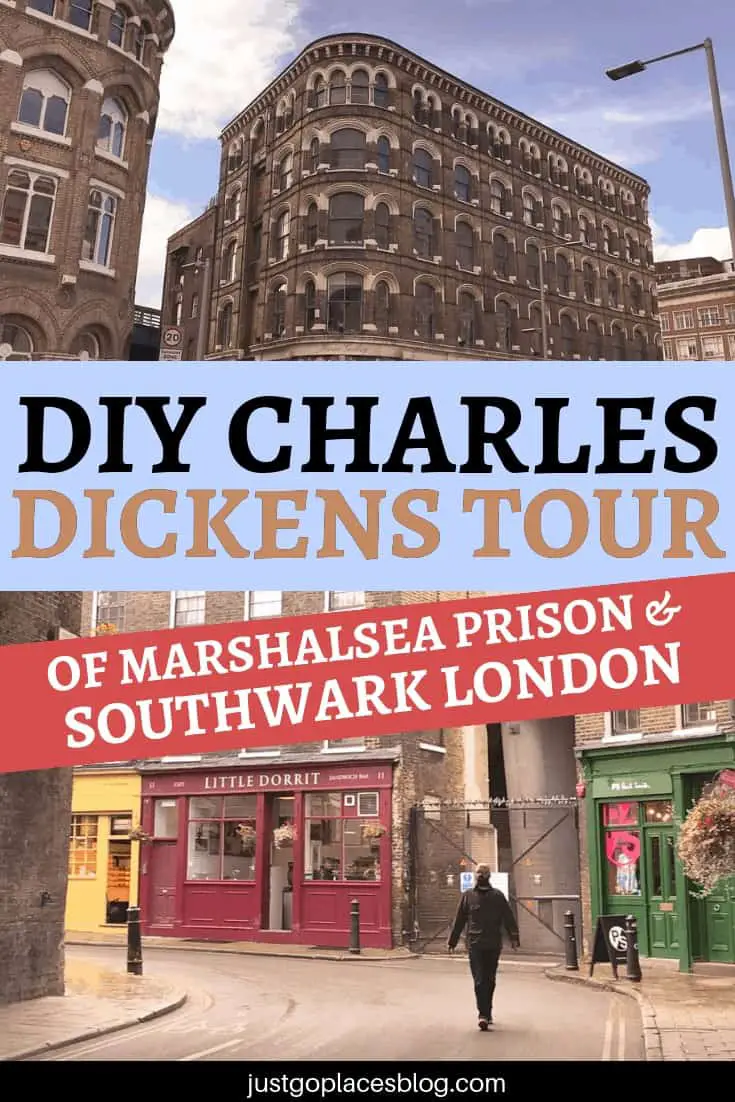
When you think of the area of Borough in London nowadays, usually Borough Market
springs to mind. But in previous centuries, this area was definitely less pleasant and more
dangerous… and home to Marshalsea Prison where a young Charles Dickens experienced
poverty in Victorian England firsthand. Discover the history behind Marshalsea Debtor’s
Prison and what it has to do with Charles Dickens.
This site generates income via partnerships with carefully-curated travel and lifestyle brands and/or purchases made through links to them at no extra cost to you. More information may be found on our Disclosure Policy.

